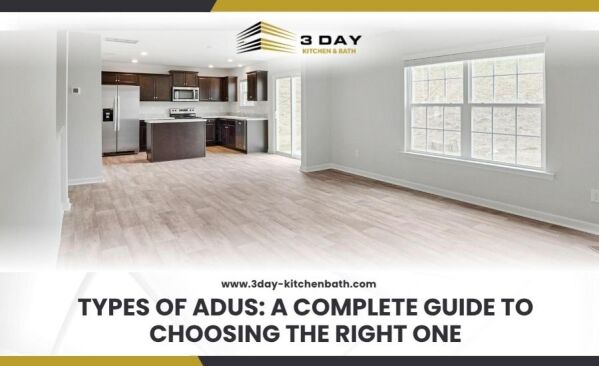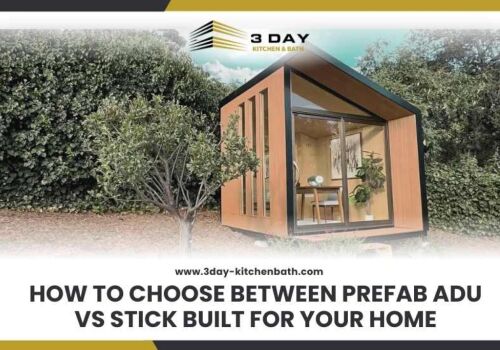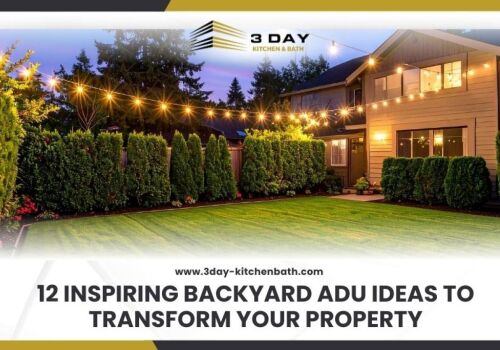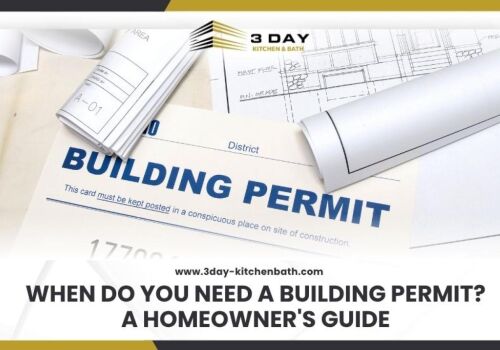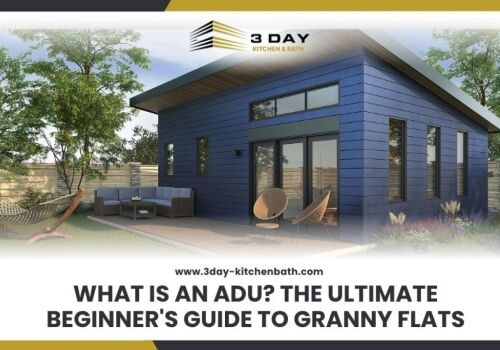The four main types of ADUs are detached units, attached units, garage conversions, and Junior ADUs (JADUs). The best option for your property depends entirely on your specific goals, available space, and budget.
So, what is an ADU? Accessory dwelling units give homeowners flexibility in how they use their property. They can provide rental income, house family members, or serve as a dedicated home office.
However, choosing the right type requires balancing your vision with the practical rules of your property. This guide provides a clear framework to help you make an informed choice that aligns with your long-term goals.
- ADU Types at a Glance: A Quick Comparison
- The 4 Main Types of ADUs
- Detached ADU (The Private Backyard Cottage)
- What are the Pros?
- What are the Cons?
- Attached ADU (The Seamless Home Extension)
- What are the Pros?
- What are the Cons?
- Garage Conversion ADU (The Cost-Effective Repurpose)
- What are the Pros?
- What are the Cons?
- Junior ADU / JADU (The Smart Interior Solution)
- What are the Pros?
- What are the Cons?
- How to Choose the Perfect ADU
- What is Your Primary Goal?
- What are the Pros?
- What are the Cons?
- What Can Your Property Hold?
- What are the Pros?
- What are the Cons?
- What Does Your Budget Allow?
- What are the Pros?
- What are the Cons?
- How Do You Connect Your Priorities to a Type?
- What are the Pros?
- What are the Cons?
- What Are Your Next Steps to Building an ADU?
- Find the Right ADU for Your Home
- Frequently Asked Questions
- What is the most common type of ADU?
- What are the Pros?
- What are the Cons?
- Which type of ADU adds the most value?
- What are the Pros?
- What are the Cons?
- Which type of ADU is the most affordable?
- What are the Pros?
- What are the Cons?
- Can my ADU be two stories?
- What are the Pros?
- What are the Cons?
- Do I have to add a parking space for my ADU?
ADU Types at a Glance: A Quick Comparison
To simplify this complex decision, it helps to start with a high-level view. This comparison table helps you identify which options are best suited for you based on key factors.
| Feature | Detached ADU | Attached ADU | Garage Conversion | Junior ADU (JADU) |
| Relative Cost | Highest | High | Medium | Lowest |
| Typical Build Time | 8 - 14+ months | 5 - 12 months | 3 - 9 months | 2 - 6 months |
| Privacy Level | Maximum | Fair to Good | Good | Fair |
| Rental Potential | Highest | High | Medium to Good | Good |
| Primary Challenge | Highest upfront investment & space needs | Construction surprises | Loss of parking or storage | Strict legal limits & lowest privacy |
As the table illustrates, the "best" option is rarely the most obvious one. To make a truly informed decision, let's talk about the specific characteristics and critical considerations for each ADU type.
The 4 Main Types of ADUs
Understanding the details of each option is the key to a successful project.
Detached ADU (The Private Backyard Cottage)
A detached ADU stands as a completely separate, self-contained home on your property. It serves as a miniature home with its own entrance, kitchen, bathroom, and living space.
What are the Pros?
- Maximum Privacy: The physical separation from the main house ensures the highest level of privacy for everyone, making it ideal for market-rate renters.
- Highest Property Value: Due to their independence and appeal, these units typically add the most important value to a property.
- Design Flexibility: This option offers complete freedom over the layout and architectural style, unconstrained by the existing home.
What are the Cons?
- Highest Investment: This is the most expensive ADU type, as it requires a new foundation, structure, and entirely separate utility connections.
- Requires Large Space: A detached unit demands a large amount of yard space to fit the structure and meet legal setback requirements.
- Longest Build Time: The process for a new build, from permitting to final construction, is inherently longer than for a conversion.
Attached ADU (The Seamless Home Extension)
An attached ADU is built as an addition that shares at least one wall with the primary residence. This can be a side extension or a second-story addition over the main home or an existing garage.
What are the Pros?
- More Cost-Effective Than Detached: By leveraging an existing wall, the upfront construction investment is generally lower than that of a new detached structure.
- Efficient Use of Space: This is an excellent option for properties with smaller lots, expanding the home's footprint without consuming the entire yard.
- Simpler Utility Connections: Tapping into the main home's existing systems can be simpler and less expensive than trenching for new, separate utility lines.
What are the Cons?
- Reduced Privacy: Shared walls can create the potential for noise transfer between the two units, a key consideration for both owners and tenants.
- Construction Unpredictability: The process involves opening up the walls of an existing home, which can reveal unforeseen issues that lead to unbudgeted expenses.
- Impact on Main Home: Construction is more disruptive to the daily life of those living in the primary residence.
Garage Conversion ADU (The Cost-Effective Repurpose)
An ADU garage conversion transforms an existing attached or detached garage into a legal, habitable dwelling. It has become one of the most popular ADU types, particularly where space is at a premium.
What are the Pros?
- Lower Upfront Investment: Utilizing the existing foundation, framing, and roof makes conversions substantially less expensive than building a new unit from the ground up.
- Faster Timeline: Because the main structure is already in place, both the permitting and construction timelines are typically much shorter than for new builds.
- Preserves Yard Space: This approach converts an existing footprint, leaving the backyard and any green space on the property intact for other uses.
What are the Cons?
- Loss of Parking & Storage: The primary trade-off is the permanent loss of covered parking or valuable storage space.
- Complex ROI: While adding living space increases property value, losing a garage can simultaneously decrease it in some markets, making the net return less straightforward.
- Design Limits: The ADU's layout is dictated by the garage's existing footprint, which can make creating a functional and appealing floor plan a challenge.
Junior ADU / JADU (The Smart Interior Solution)
A Junior ADU (JADU) is a small dwelling unit created entirely within the existing footprint of a single-family home. It repurposes existing space, like a spare bedroom, and is legally capped at 500 square feet.
A JADU is all about transforming an interior space into a modern, efficient living area.
What are the Pros?
- Lowest Investment & Fastest Timeline: With no new construction involved, a JADU is by far the most affordable and quickest ADU type to create.
- Minimal Yard Impact: A JADU has zero impact on your yard space, as it is an internal conversion.
- Simplified Utilities: This unit can often tap directly into the main house's existing systems and may even legally share a bathroom.
What are the Cons?
- Owner-Occupancy Requirement: Most areas require the property owner to live in either the main house or the JADU, which limits rental flexibility.
- Limited Privacy: Being located inside the main home offers the lowest level of privacy among all ADU types.
- Strict Size Limits: A JADU cannot exceed 500 square feet, which limits its functionality and appeal for many potential occupants.
Now that you understand the unique profile of each ADU, the next step is to apply that knowledge to your own situation. This straightforward four-step framework will guide you through the process of matching your goals to the right ADU type.
How to Choose the Perfect ADU
Ask yourself these questions to determine which ADU type is the best fit for you.
What is Your Primary Goal?
Your "why" is the most important factor in your decision.
- For Rental Income: A Detached ADU is the superior choice for maximizing rent and property value.
- For Housing Family: An Attached ADU offers a great balance of proximity and independence.
- For a Budget-Conscious Solution: A Garage Conversion provides a usable living space quickly and affordably.
- For a Flexible Internal Space: A JADU is perfect for a single occupant when the owner plans to remain on the property.
What Can Your Property Hold?
The physical rules of your property will filter your options.
- Assess Your Lot Size: Measure your available yard space to see if a Detached ADU is possible after accounting for setbacks.
- Check Local Zoning Regulations: Visit your local planning department's website to find the "ADU Ordinance." Look for ADU requirements and guidelines on setbacks, maximum size, and height.
What Does Your Budget Allow?
Building an ADU is a major financial project. It is crucial to understand your financing options.
Home Equity Line of Credit (HELOC): This flexible line of credit is well-suited for drawing funds as needed during construction.
- Cash-Out Refinance: This replaces your current mortgage with a new, larger one, giving you the difference in cash.
- Construction Loan: This short-term loan is based on the future value of your property with the completed ADU.
Consulting a financial advisor is recommended to determine which option best preserves your financial health.
How Do You Connect Your Priorities to a Type?
Now, connect your goals, property, and budget to make a final decision.
- If your priority is rental income on a large lot with a healthy budget, choose a Detached ADU.
- If your priority is housing a family on a smaller lot with a moderate budget, choose an Attached ADU.
- If your priority is the lowest upfront investment and you can sacrifice a garage, choose a Garage Conversion.
- If your priority is a simple space for one person and you will live on-site, choose a JADU.
What Are Your Next Steps to Building an ADU?
Once you have a clear direction, the path forward becomes simple. Our ADU services can guide you through every stage.
- Feasibility Assessment: Start with a professional evaluation of your property.
- Design & Budgeting: Work with a designer to create plans that meet local codes.
- Permitting: Learn the local approval process to secure all necessary permits.
- Construction: Bring your vision to life with a qualified contractor.
Find the Right ADU for Your Home
The "best" ADU is not a one-size-fits-all answer. It is the type that perfectly aligns with a homeowner's unique combination of goals, property limits, and financial capacity. By carefully considering the trade-offs, you can identify the right path forward.
Working with experienced ADU contractors in San Diego is the best way to go through this process.
Frequently Asked Questions
What is the most common type of ADU?
Garage conversions are extremely popular in many areas. Their popularity comes from their cost-effectiveness and ability to use an existing structure without taking up yard space.
Which type of ADU adds the most value?
Detached ADUs typically add the most value to a property. Their separation and privacy are highly valued by potential buyers and renters.
Which type of ADU is the most affordable?
A Junior ADU (JADU) is generally the cheapest option, followed closely by a basic garage conversion. However, this comes with trade-offs in size, privacy, and flexibility.
Can my ADU be two stories?
Yes, in many areas, but this is strictly regulated by local zoning laws. There will be a maximum height limit and specific setback requirements for two-story structures.
Do I have to add a parking space for my ADU?
Often, no. Many governments have eliminated parking requirements for ADUs, especially if the property is located near public transit or is a conversion of an existing space.
Ready to take the next step? Book a consultation with us today!

